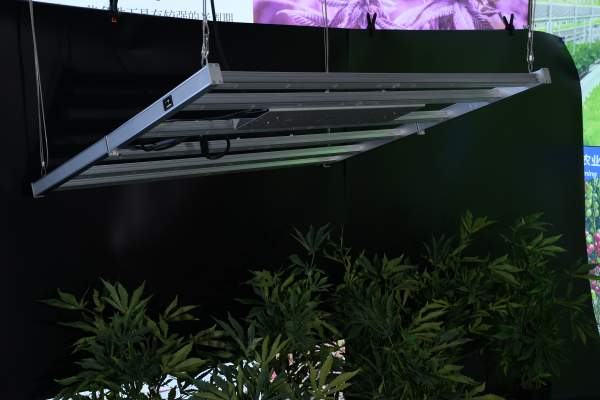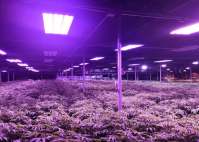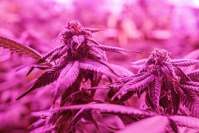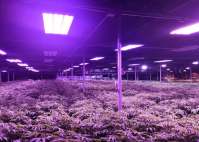The spectra of different wavelengths of yaorong LED grow lights have different effects on plant photosynthesis, and the wavelength is about 400~720nm. 400~520nm (blue) light and 610~720nm (red) have the greatest contribution to photosynthesis. The proportion of 520~610nm (green) light absorbed by plant pigments is very low.

LED grow lights have many advantages such as accurate light quality, artificial combination adjustment, high unit power consumption, good plant lighting effect, low operating cost (super power saving), etc., and are welcomed by the world agricultural research institutes and smart plant factories.
The growth process of plants generally includes seed germination, leaf development, flowering, and fruiting stages. The transition from seeds to seedlings to mature plants can be achieved. We can customize the LED grow light spectrum to shorten the growth cycle of crops.
When light shines on the plant, the light energy is captured by the pigment in the leaf chloroplast, which absorbs most of the blue and red light. Therefore, in different environments, plants have formed different adaptation strategies in the long-term adaptation and genetics. , There are sun plants, shade plants and shade-tolerant plants.
Different target organs have different spectrums of LED grow lights. For example, in the cultivation of leafy vegetables, what we need is leaves, while solanum fruits are for fruits. For rhizomes, we need tubers. The target organs are inconsistent. The physiological and biological characteristics are quite different, and the spectrum may also be different. . Depending on the purpose of the implementer, the spectrum is also different. For example, by appropriately increasing the far-red light content of LED grow lights to promote early flowering, using ultraviolet light to increase the content of secondary metabolites and so on. Differences in reproduction methods will also affect the use of the spectrum. For example, tissue culture, cuttings, grafting, substrate culture and hydroponics and other propagation methods are quite different, which will affect the selection of the spectrum.
Let us take a look at the influence of LED grow light's spectral range on plant physiology.
280~315 nm: minimal influence on morphology and physiological processes.
315~400nm: Less absorption of chlorophyll, which affects the photoperiod effect.
400~520 nm (blue): The absorption rate of chlorophyll and carotenoids is the largest.
520~610nm (green): The pigment absorption rate is not high.
610~720nm (red): The absorption rate of chlorophyll is low, which has a significant impact on photosynthesis and photoperiod effects.
720~1000nm: Low absorption rate, stimulate cell elongation, affect flowering and seed germination.
>1000nm: Converted to heat.
No matter what kind of demand, Yaorong Technology independently developed a variety of LED grow lights for leafy vegetable cultivation, solanaceous fruit cultivation, medicinal plant cultivation, etc., which have achieved improvements in crop yield and quality, and shortened crop growth cycles. Obvious results have been achieved.






